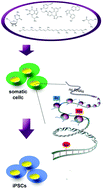Effect of small molecules on cell reprogramming
Abstract
The essential idea of regenerative medicine is to fix or replace tissues or organs with alive and patient-specific implants. Pluripotent stem cells are able to indefinitely self-renew and differentiate into all cell types of the body which makes them a potent substantial player in regenerative medicine. The easily accessible source of induced pluripotent stem cells may allow obtaining and cultivating tissues in vitro. Reprogramming refers to regression of mature cells to its initial pluripotent state. One of the approaches affecting pluripotency is the usage of low molecular mass compounds that can modulate enzymes and receptors leading to the formation of pluripotent stem cells (iPSCs). It would be great to assess the general character of such compounds and reveal their new derivatives or modifications to increase the cell reprogramming efficiency. Many improvements in the methods of pluripotency induction have been made by various groups in order to limit the immunogenicity and tumorigenesis, increase the efficiency and accelerate the kinetics. Understanding the epigenetic changes during the cellular reprogramming process will extend the comprehension of stem cell biology and lead to potential therapeutic approaches. There are compounds which have been already proven to be or for now only putative inducers of the pluripotent state that may substitute for the classic reprogramming factors (Oct3/4, Sox2, Klf4, c-Myc) in order to improve the time and efficiency of pluripotency induction. The effect of small molecules on gene expression is dosage-dependent and their application concentration needs to be strictly determined. In this review we analysed the role of small molecules in modulations leading to pluripotency induction, thereby contributing to our understanding of stem cell biology and uncovering the major mechanisms involved in that process.


 Please wait while we load your content...
Please wait while we load your content...